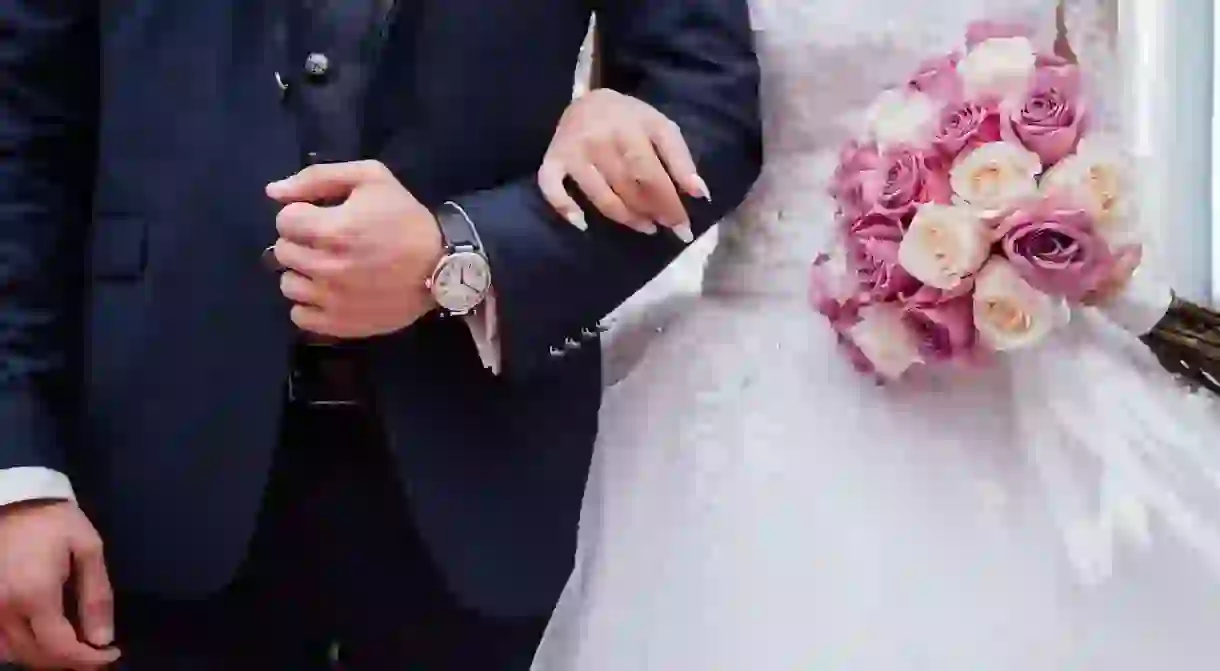How to Survive a Bulgarian Wedding

Bulgarian weddings are fun, noisy, and sometimes puzzling to foreigners. There are many traditions that used to be observed in the past, but nowadays young people often choose just a few of them and skip the others. If you get invited to a really traditional Bulgarian wedding, however, here’s a little background to help you understand what is going on and why.
“Buying” the bride
The wedding day begins in the late morning or noon when the groom and his friends head to the bride’s house to symbolically buy her from her family. The friends and family of the bride lock her in a room and only squeeze her shoe out of the door so the groom fills it with money. The ritual requires that the bride’s family return the shoe several times, pretending the money is not enough for their precious bride. In a joking manner, the real shoe is often swapped for a ski boot or other kind of footwear that can contain more money.

The last dance as an unmarried woman
If the woman getting married lives in a block of flats, usually all the neighbors are aware of it because when she leaves her home for the last time as an unmarried woman, she has to dance her last horo (Bulgarian folk dance) in front of the building. She is accompanied by a live orchestra, and soon everyone joins the horo.
Throwing coins and grains
In Bulgaria, there are two separate ways you can get married – in a church (religious) or before the municipality (legal). The church ritual involves reading passages from the Bible, going around a table with icons, putting crowns on the heads of the bride, the groom, and their first witnesses (in Bulgaria, they are always two, a best man and a “best woman”), etc. When the religious ritual is over, the “best woman” throws little packages containing a coin and grains in the air over the heads of the newlyweds. This is believed to bring them wealth, health, and good fortune.

Guessing the sex of the first child
The wedding continues in a restaurant. When all the guests have taken their seats, the bride and the groom enter officially. At the end of the walk, their parents await. The mothers-in-law give small bites of bread and honey to their son and daughter-in-law as a symbol of joining their families. Then the bride kicks a small bucket containing water, a white flower, and a red flower. If the white flower rolls out farther, the first child of the young family will be a boy. If the red flower does, it will be a girl.

Who will be the boss
Another tradition defines who will be the boss in the family. The bride and the groom stand up, back to back, and hold a big, round loaf of bread over their heads. At a special signal, they both try to divide it into two and get the bigger chunk, which symbolizes who will have the power in the family.
What to do as a guest
The best part for you as a guest is that you don’t have any special obligations other than being a part of the special day of the couple. When it comes to gifts, many young families announce what they want – a specific gift or simply money that they use to pay for their wedding or go to an exotic destination for their honeymoon.













